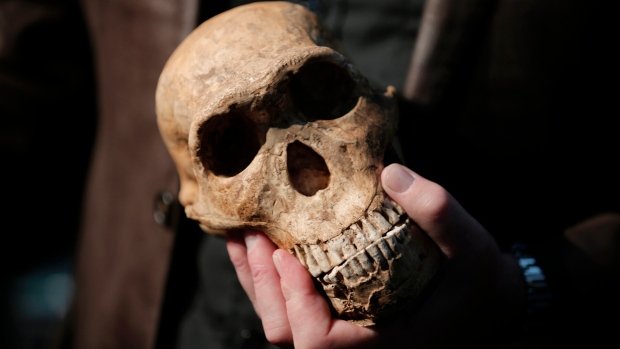Homo naledi species discovery raises fresh questions about evolution Small-brained Homo naledi may have been driven extinct by early humans, some scientists believe

From CBC
Scientists today unveiled the first evidence on that early humans co-existed in Africa 300,000 years ago with a small-brained human-like species thought to already be extinct on the continent at that time.Read more: http://www.cbc.ca/news/technology/homo-naledi-species-discovery-1.4104860The findings, published in three papers in the journal eLife, raise fresh questions about human evolution, including the prospect that behaviours previously attributed to humans may have been developed by hominin precursors of Homo sapiens.
Hominins are an extinct group of the same genus as humans, the only surviving members of that category today. Man's nearest living relatives, chimpanzees and gorillas, are further removed from Homo sapiens biologically than hominins are.
The species in question is Homo naledi, named in 2015 after a rich cache of its fossils was unearthed near Sterkfontein and Swartkrans in South Africa.
These treasure troves, some 50 km northwest of Johannesburg, have yielded pieces of the puzzle of human evolution for decades.
Scientists initially thought Homo naledi's anatomy suggested the fossils might be as much as 2.5 million years old and were startled by evidence that suggested the species may have buried its dead, a trait long believed to be uniquely human.
Possible toolmaker
Another surprise found in the Homo naledi discovery was the possibility of the species building tools.
Dr. Tracy Kivell, a Canadian who is an assistant professor of biological anthropology in the University of Kent in the U.K., specialized in analyzing hand fossils to determine the behaviour and lifestyle of Homo naledi.
"Both caves showed aspects of the wrist bones and thumb that are features only found in humans and Neanderthals," she said. "It could be interpreted as toolmakers because of their hand dexterity."
Kivell was quick to say there is no evidence of tools used or created by Homo naledi, but it is an educated guess from the bones. At the same time, the species changes the assumption that only "big brained humans" were capable of creating such implements, as it lived around the same time as modern humans did.
Kivell said it could change how ancient stone and wooden tools are interpreted, as they could have been formed by other "archaic human-types" like Homo naledi.
Follow @contentjunkie to stay up to date on more great posts like this one.

cool
This post has been ranked within the top 80 most undervalued posts in the second half of May 10. We estimate that this post is undervalued by $11.65 as compared to a scenario in which every voter had an equal say.
See the full rankings and details in The Daily Tribune: May 10 - Part II. You can also read about some of our methodology, data analysis and technical details in our initial post.
If you are the author and would prefer not to receive these comments, simply reply "Stop" to this comment.